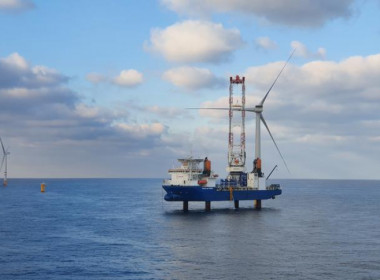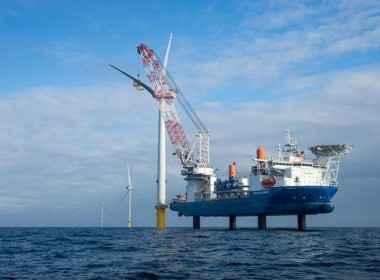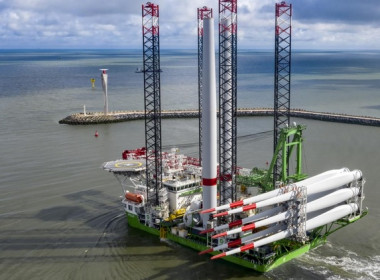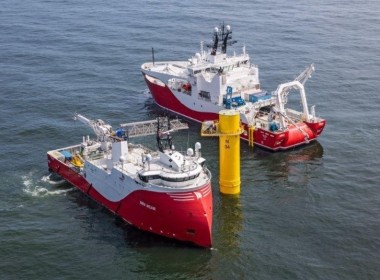COLUMN | Holland (and Belgium)’s glory: how the low countries are winning in offshore wind [Offshore Accounts]
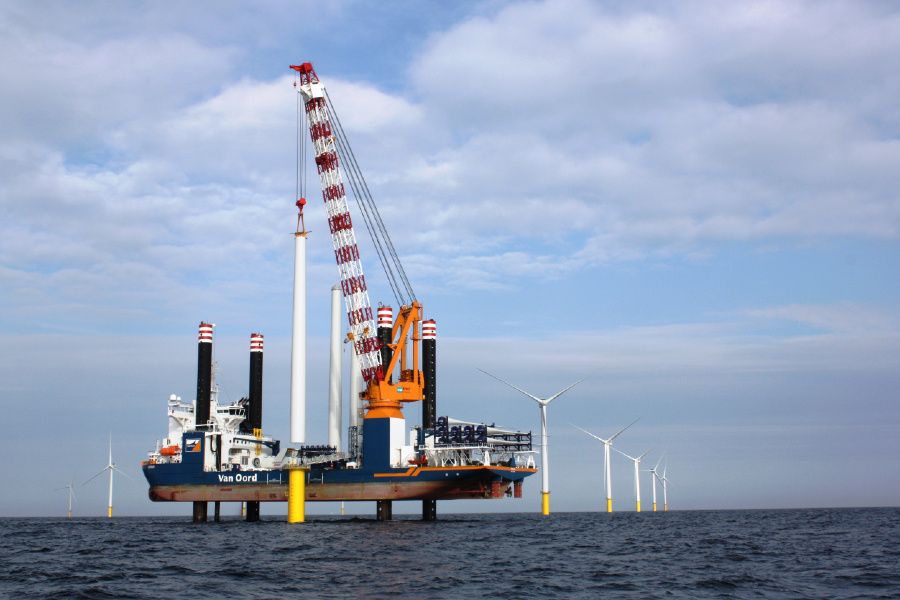
Holland’s Glorie is a novel published in 1940 by the Dutch writer Jan de Hartog. The novel glorified the life of the pre-war salvage master. In English, it was published as Captain Jan (here).
It was the literary sensation of the 1940s, selling hundreds of thousands of copies, and it is the foundation on which the glamour of the Dutch salvage industry was born – a lustre that remains to the present day, as seen by the successful role of Boskalis in the refloating of the containership Ever Given in the Suez Canal in March (here).
But the glory days of salvage are fading, as my colleague Alan Loynd discussed here. Ships are getting safer, contrary to what you might think, salvages are fewer, and Alan has now published his memoirs (available here), reliving the glory days of salvaging a Boeing 747 jumbo jet from Hong Kong harbour after an unfortunate accident.
But the Dutch now have a new card to play.
Meet the “Big Four” in wind
Holland’s glory now lies in the offshore wind industry, where both Dutch and Belgian players are building an outstanding position as integrated service providers offering turnkey wind foundation, turbine, and cable installations.
Four companies stand at the forefront, in alphabetical order: Boskalis, DEME, Jan De Nul and Van Oord. These dredging players and polder-builders made good have invested to provide the full range of offshore services required to build, install, and maintain offshore wind farms. They are the “Big Four” of wind.
Heritage in the dykes
The Big Four share many similarities – these are all well-established companies with deep roots in the low countries. Van Oord is the oldest of the four, founded by Govert van Oord in 1868.
DEME emerged from the consolidation of various Belgian marine and coastal works businesses, starting in 1880 when the contractors Nicolaas van Haaren and Hendrik-Willem Ackermans established a gravel and dredging business in Antwerp. It was incorporated in 1924 and became the core asset of what is nowadays the Belgian investment company Ackermans and van Haaren, which remains one of the two shareholders in DEME.
Boskalis (Bos and Kalis) began as Johannes Kraaijeveld en van Noordenne, which was set up in 1910. In the 1930s, it was renamed Baggermaatschappij Bos and Kalis when Gerrit Jan Bos, Wilhelm Bos, Egbertus Dingeman Kalis, and Kobus Kalis took over the business.
In the last two decades Boskalis has become a prolific consolidator, buying the rump Smit business in towage, salvage, and offshore in 2009 (here), and even making an attempt to buy survey market leader Fugro. This attempted take-over was thwarted in 2016 (here), after court battles, poison pills, and much acrimony.
Jan De Nul is the youngest
Jan De Nul is the relative latecomer as it was “only” founded in 1938, in Hofstade, Belgium, as a construction enterprise specialised in civil works and inshore works. In 1951 the company entered the dredging business.
This heritage gives the Big Four a depth of experience and client relations that many of the new wind businesses listing on the Oslo stock exchange can only envy.
Massive wind investments
Building on their success in dredging, rock dumping, and coastal works, the Big Four have invested across the board in new equipment to install wind farms. They now hold a commanding lead in the wind industry.
The Big Four are now much better capitalised than the new entrants in Scandinavia in the wind industry, even following recent equity raises in Oslo. Cadeler (ex-Swire Blue Ocean) raised US$97 million in a private placement last month to fund some of the equity its X-class wind turbine installation vessels. Eneti, the ex-Scorpio Bulkers, has been busy flogging its fleet of bulk carriers to fund its ambitions in wind.
All of the Big Four were profitable in their most recent published accounts and are expanding using their existing cash flows.
Van Oord has more wind revenue than dredging
In 2020, for the first time, Van Oord’s revenue from wind farm activities of €632 million (US$769 million) was higher than its income from dredging (here for the annual report). That is more than thirty times bigger than the 2020 annual revenue of Cadeler (see here).
And Van Oord’s total revenue last year was €1.7 billion (US$2.06 billion), eighty times larger than that of Denmark’s largest operator of jackup turbine installation vessels, which lost money in 2020. Yes, you read that right – eighty times larger.
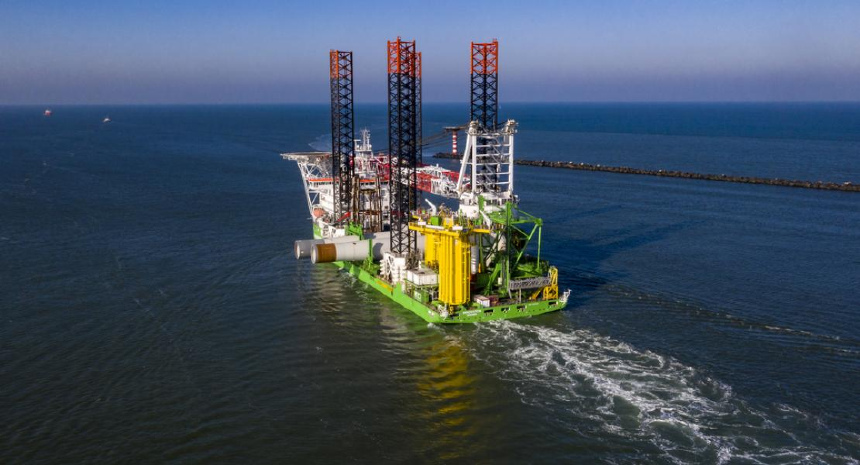
DEME’s total turnover in 2020 was €2.2 billion (US$2.67 billion), Boskalis’ was €2.5 billion (US$3.04 billion), and whilst Jan De Nul has not yet released its 2020 annual report, it boasted of €2 billion of turnover in 2019 (here).
Boskalis’ income from offshore energy (which includes both wind and its oil and gas activities) was over €1 billion (US$1.22 billion), five times larger than its towage and salvage operations, and stood at over 70 per cent of its dredging revenues.
Big, and getting bigger
These are big companies. Boskalis has a market capitalisation of US$4.5 billion at the time of writing. The European dredging market has consolidated significantly, and this has increased the profitability of the Big Four, enabling them to invest in complementary equipment to support wind farm activities.
Barely a month goes by without news of a new wind contract award to one of the Big Four, or a capital investment decision to buy new equipment.
DEME wins in the Baltic
In February, DEME announced that it had been awarded a substantial engineering, procurement, construction and installation (EPCI) contract for the foundations at Parkwind’s 257MW Arcadis Ost I offshore wind farm. The next-generation XXL monopiles will be the largest ever installed in Europe with a weight of around 2,000 tonnes each, the company said (here).
The Arcadis Ost I wind farm is developed by the Belgian wind developer Parkwind in the German sector of the Baltic, near the island of Rügen. Manufactured by Steelwind in Germany, the 28 XXL monopile foundations will be about 100 metres long and will weigh around 2,000 tonnes each.
Orion will be operational this year
DEME said that it will deploy the newbuild DP3 offshore installation vessel Orion for the project. Orion was delayed after the catastrophic failure of its main crane during fit out at the Liebherr facility in Rostock last year (video here).
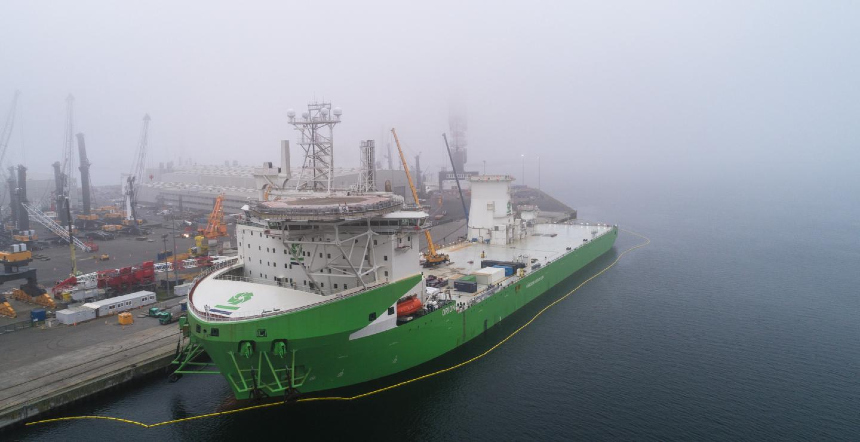
Orion will be equipped with a tailor-made, motion-compensated gripper system able to handle foundations of up to 2,500 tonnes.
DEME leads in Taiwan, too
DEME also has the first floating DP3 heavy lift and installation vessel to be built in Taiwan, Green Jade, under construction. Green Jade will feature an exceptional combination of high transport and load capacity, impressive lifting heights and green technology, the company claims.
The new vessel is being built at CSBC in Kaohsiung, and is due for delivery in 2022.
Jan De Nul trenching investment
At the end of April, Jan De Nul Group signed an agreement with Osbit (UK) for the design and construction of a new subsea trenching vehicle, named Swordfish. Delivery is scheduled for the first quarter of 2022.
Swordfish will be a high-powered state-of-the-art subsea trenching vehicle that can be fitted with either a jetting installation, a mechanical chain cutter, or a combination of both to tackle a wide variety of soil conditions and bury cables up to three or even three and half metres deep. Press release is here.
Ocean Yield yields Connector to Jan De Nul
This trencher order came on the back of the December 2020 announcement that Jan De Nul was buying the cable-lay vessel Connector from Ocean Yield of Norway. Jan De Nul said that Connector would make a “perfect combination” with its existing cable-lay vessel Isaac Newton, as both vessels are interchangeable, with similar large carrying capacities and similar dual turntable systems.
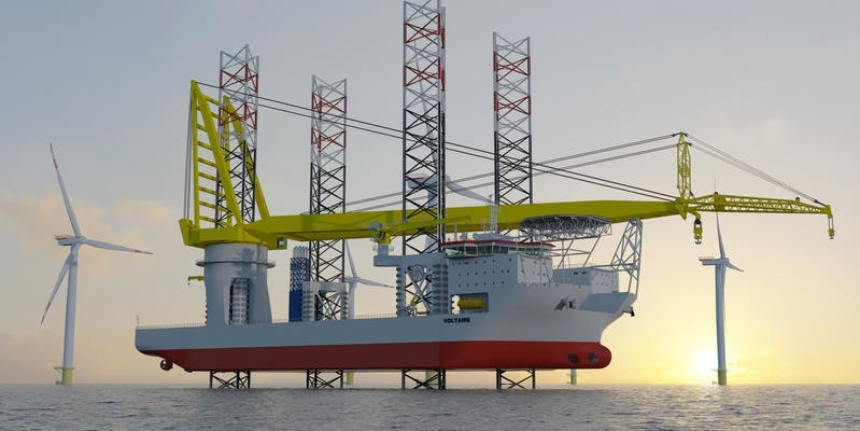
The purchase of Connector and the new trencher continued the expansion of Jan De Nul’s offshore wind fleet, following the order in 2019 of the new-build offshore jack-up installation vessel Voltaire and floating crane installation vessel Les Alizes.
Van Oord orders massive Vard cable ship
In December, Van Oord announced an order at Vard for a new cable-layer, which is due to be delivered in 2023. The ship will be 130 metres long and will have a 28-metre beam. Van Oord has described the ship as a “next-generation, custom-built green cable-laying vessel.” Vard’s press release is here.
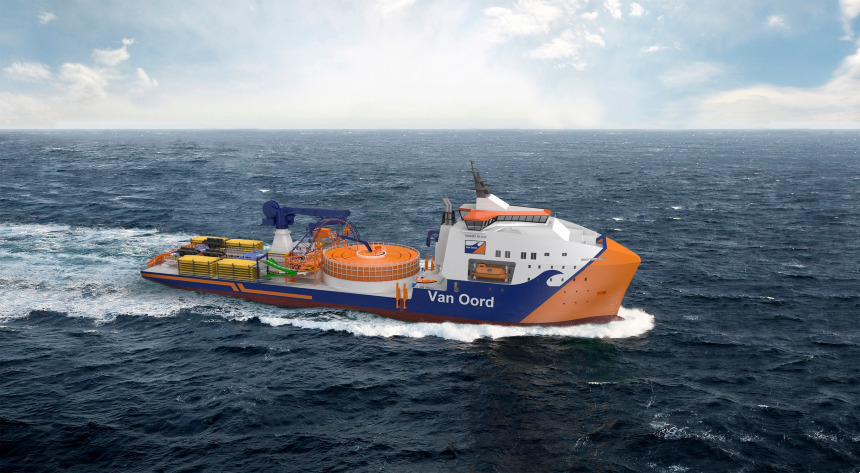
The new Van Oord cable ship will be equipped with a below-deck cable carousel and a second carousel on deck. It will target inter-array and export cable-lay projects for offshore wind farms, and will also be able to install high-voltage direct current cables, as well as providing a platform for Van Oord’s trenching units.
Boskalis hits subsea and converts drillship in UAE
Boskalis has also been extremely acquisitive, most recently buying diving company Rever Offshore (here), bareboat chartering P&O Maritime Logistics subsea vessel Topaz Tiamat for wind farm work in Taiwan, and buying the construction support vessel Southern Ocean (here) from Bourbon and Oceanteam.
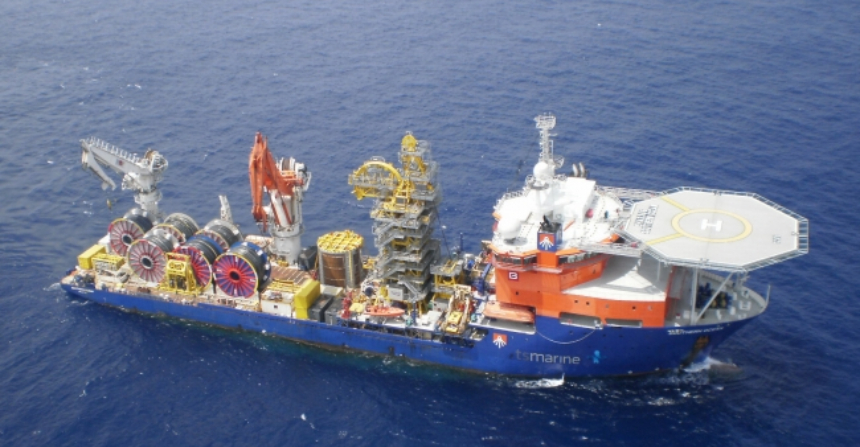
Boskalis’ big investment for 2021 in wind is the conversion of the former Transocean drillship GSF Jack Ryan into the new crane vessel Bokalift 2 in Dubai at Drydocks World. The conversion includes the fabrication and installation of 9,000 tonnes of steel blocks on both sides of the vessel to increase stability and the installation of a new work deck.
One 4,000-tonne crane will be installed on the vessel later this year, and Boskalis said here that this revolving crane will be capable of lifting structures more than 100 meters high. Bokalift 2 will also be deployed to windfarm installation operations in Taiwan upon delivery.
But there’s more…Heerema and OOS
But the Big Four are not the only Dutch and Belgian companies active in the wind farm sector. Offshore construction company Heerema Marine Contractors, based in Leiden in the Netherlands, announced last month that it has signed a contract with Singapore’s Sembcorp Marine to transport and install the Sofia Offshore Wind Farm HVDC Offshore Converter Platform in 2024 (press release here).
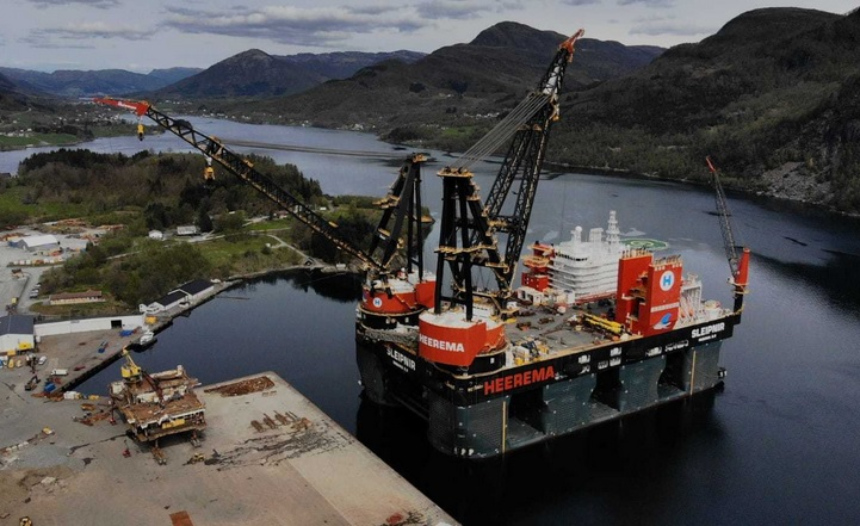
Heerema will install the platform using Sleipnir, the world’s largest and most sustainable semi-submersible crane vessel. The vessel has previously executed work for the Hollandse Kust and Hornsea 2 offshore wind farms.
This reflects the trend exemplified by Saipem and Subsea 7 for offshore oil and gas installation contractors to use their experience in jackets and topsides for windfarm installations as well.
As we noted here, OOS International of Overdulve has recently taken delivery of the two massive new building semi-submersible heavy-lift crane accommodation vessels, OOS Serooskerke and OOS Walcheren, from China Merchants Industry Holdings, and is actively marketing them into the wind installation sector in Asia and in Europe.
In the jack up market, Seafox of Hooffdorp also operates a dozen jackup maintenance units.
Power of the knowledge cluster
The Dutch have built a technology cluster in wind, which commands a significant advantage over Norway. Norway is a relative latecomer to the wind party, albeit one trying frantically to make up for lost time.
This cluster works throughout the wind supply chain. Fugro, as we have noted in our analysis of the autonomous underwater vehicle market (here), has invested heavily in new surveying technology to serve both its traditional oil and gas and telecoms cables markets, as well as the wind sector.
In the second half of 2020, Fugro boasted (here) that 59 per cent of revenue was generated in renewables, infrastructure, nautical, and other non-oil and gas-related markets.
Roll Group on a roll
Roll Group of IJsell has built up a strong position in the transport of wind turbines blades and foundations with its fleet of BigRoll and RollDock module transportation vessels. The comparison between these high-specification Dutch vessels and the P&O Maritime Logistics units, which we discussed here last week, is instructive – the Dutch vessels are longer and wider, and have higher deadweight.
In February, Roll announced that Bakker Sliedrecht and RH Marine would upgrade module carrier BigRoll Bering with a DP2 system, which means the 173-metre-long unit will compete directly with the DP2 P&O Module carriers in northern Europe.
P&O Maritime Logistics was gracious enough to contact us to correct some factual errors in our coverage last week – for which we apologise. But we still think their narrow, shallow-draught river to sea vessels are overpriced, white elephants once the Tenghizchevroil project in Kazakhstan ends.
Let’s see; we love being proved wrong. But only a fool would bet against the Dutch.
Walk-to-work began in Delft
At the heart of the walk-to-work revolution in both offshore wind and offshore oil and gas has been Ampelmann Operations, the creators of the first commercial active heave compensated gangway. Ampelmann gangways have transformed the maintenance market by permitting ordinary DP2 vessels to provide accommodation for technicians alongside both oil and gas platforms and turbines. The company is based out of its headquarters in Delft. It is fair to say that Ampelmann’s innovation was one of the single biggest developments in offshore in the twenty-first century.
Jan van der Tempel, the founder of the company, was nominated for the European Inventor Award 2021 in the “Industry” category, the European Patent Office announced earlier this month. He came up with the concept for the Ampelmann gangway system in 2002 whilst attending a conference in Berlin and he named the invention after the figure used in the pedestrian crossing lights in the city (Ampelmann means “traffic light man.”).
Van der Tempel obtained his first European patent in 2012. “Our solution is the only one with cylinders that work in six directions and reach a full stationary point with only millisecond delays,” he remarked.
But Ampelmann has competition – Dutch competition
But there’s more to the Dutch gangway industry than just Ampelmann, as other local competitors have sprung up to challenge its leadership in the walk-to-work segment – SMST (here), Safeway (here) and Barge Master (here).
Leading engineering and shipbuilding house Royal IHC in Kinerdijk also has a design for an active heave compensated gangway of its own, which it dubs the Sea-Link (here). Walk-to-work gangways are now as Dutch as stroopwafels and Heineken.
Vroon and Wagenborg in walk-to-work
As a result of this powerful cluster of equipment providers in the neighbourhood, it is not surprising that Dutch OSV players Vroon and Wagenborg have taken a strong position in the North Sea walk-to-work vessel market.
Wagenborg’s Kroonborg features a motion compensated Ampelmann gangway system, the world’s first heave compensated Barge Master T40 crane, DP2 system, Voith Schneider Propellers and bow thrusters, a daughter craft and accommodation facilities for 60 people on board. The documentary on the vessel is here.
Conclusion: wind is Holland and Belgium’s glory
For all the froth and buzz being generated in Norway and Denmark over the wind sector, it is very clear that the Big Four in Belgium and the Netherlands have the lead in wind, and are backed by a powerful cluster of engineering and technology expertise. They have achieved a global presence in wind and are far ahead of their competitors in the key Asian growth markets as well as northern Europe.
Yes, the Oslo stock exchange is powering a new cohort of spin-offs and start-ups in wind, which are raising impressive amounts of money, and which are backed by some of the biggest names in shipping in Norway. But the low countries have produced a crop of extremely capable and profitable leaders in wind farm installation, which will be hard for the Danes and Norwegians start-ups to catch. The Big Four have built up an enviable track record of experience, and have built diversified and modern fleets covering a wide range of wind-related activities, with more cutting-edge vessels on order.
The rise of the Big Four integrated players also places enormous pressure on the smaller, specialist players, such as Global Marine Group, in cable lay and trenching.
For now, the Dutch have the lead, the capital, and the track record. The Latin motto of the province of Zeeland is Luctor et Emergo, or Ik worstel en kom boven in Dutch, which means “I struggle and rise above”.
Zeeland adopted the slogan during the Eighty Years’ War, when the Dutch provinces revolted against the Spanish King Philip II, and succeeded in winning independence after a bloody struggle. The motto seems most appropriate for the emergence of the Big Four in offshore wind as well.
Background reading
DEME’s parent company’s annual report is here.
Boskalis’ annual report is here.
Dredging.org has useful historical information on the role of the Big Four in the global dredging market here.
The Roll Group’s heavy cargo solutions for wind can be viewed here.
We covered DEME’s subsea mining trials here.


